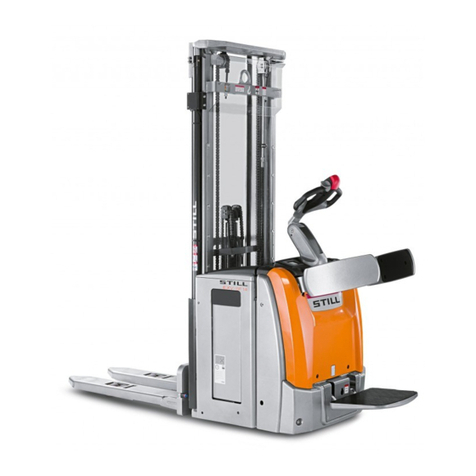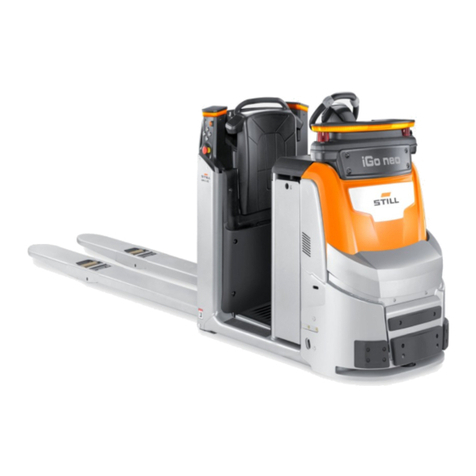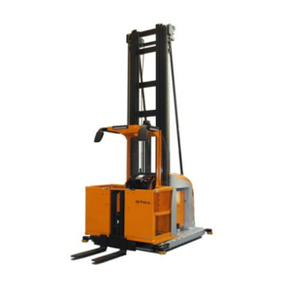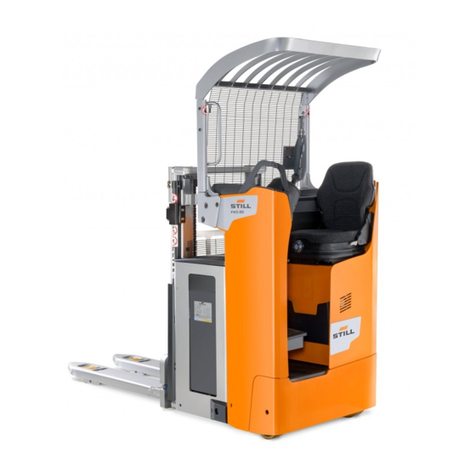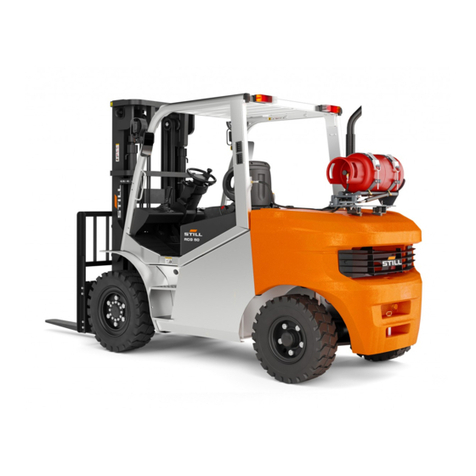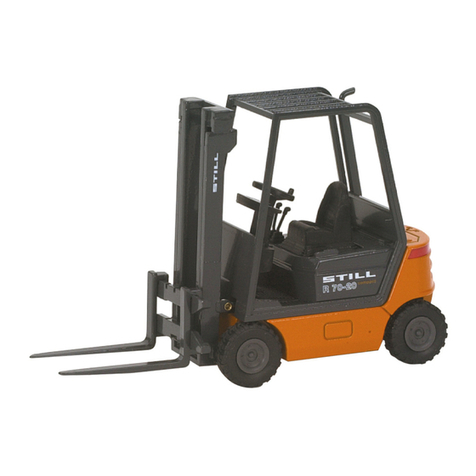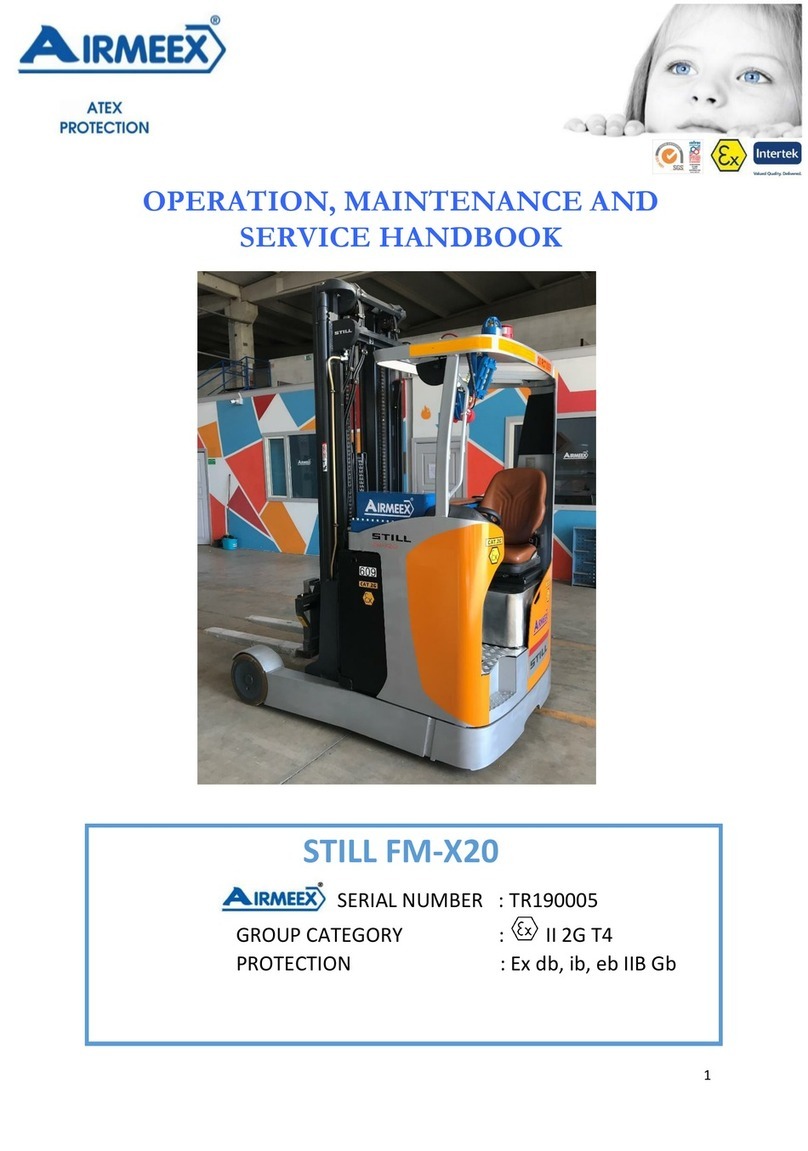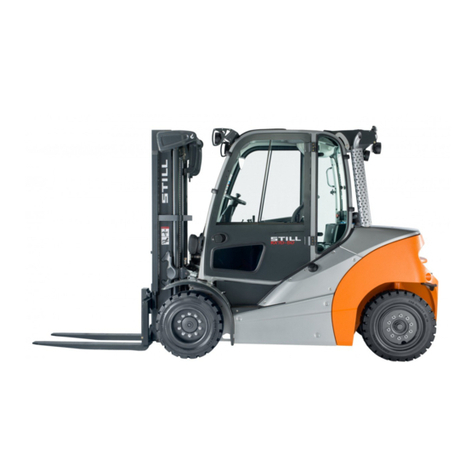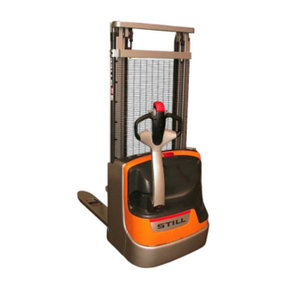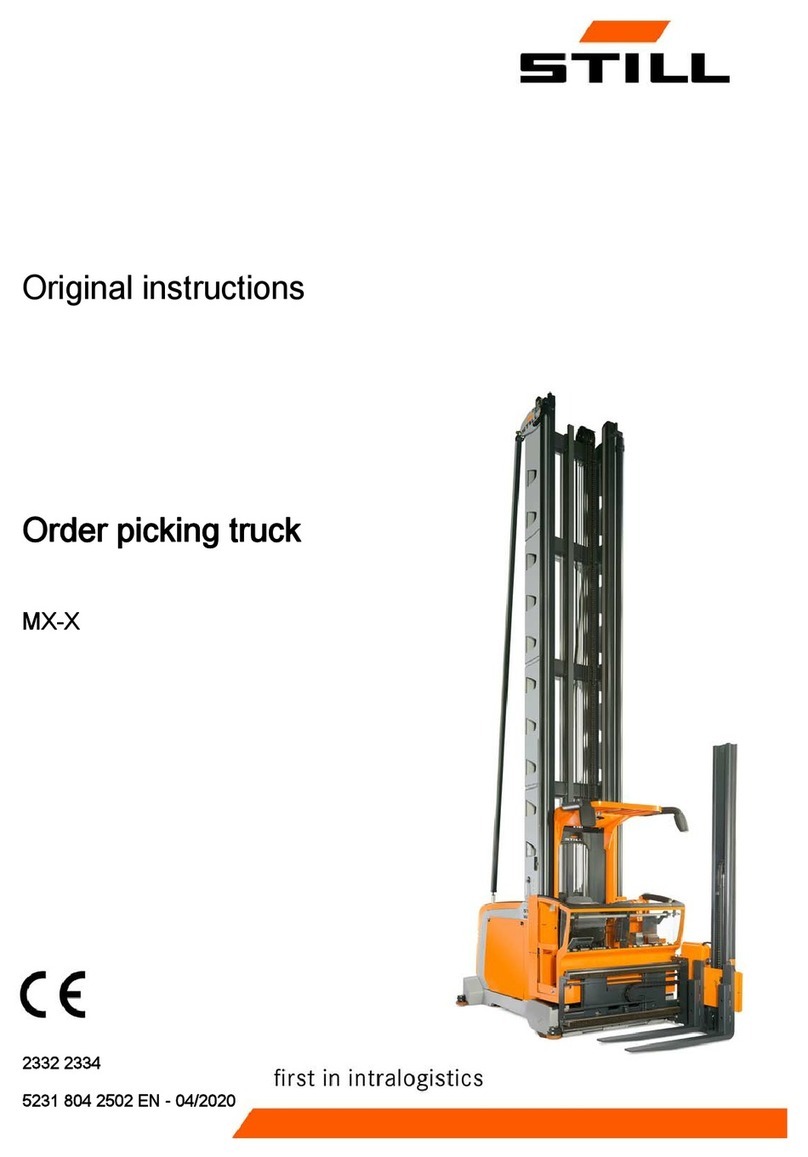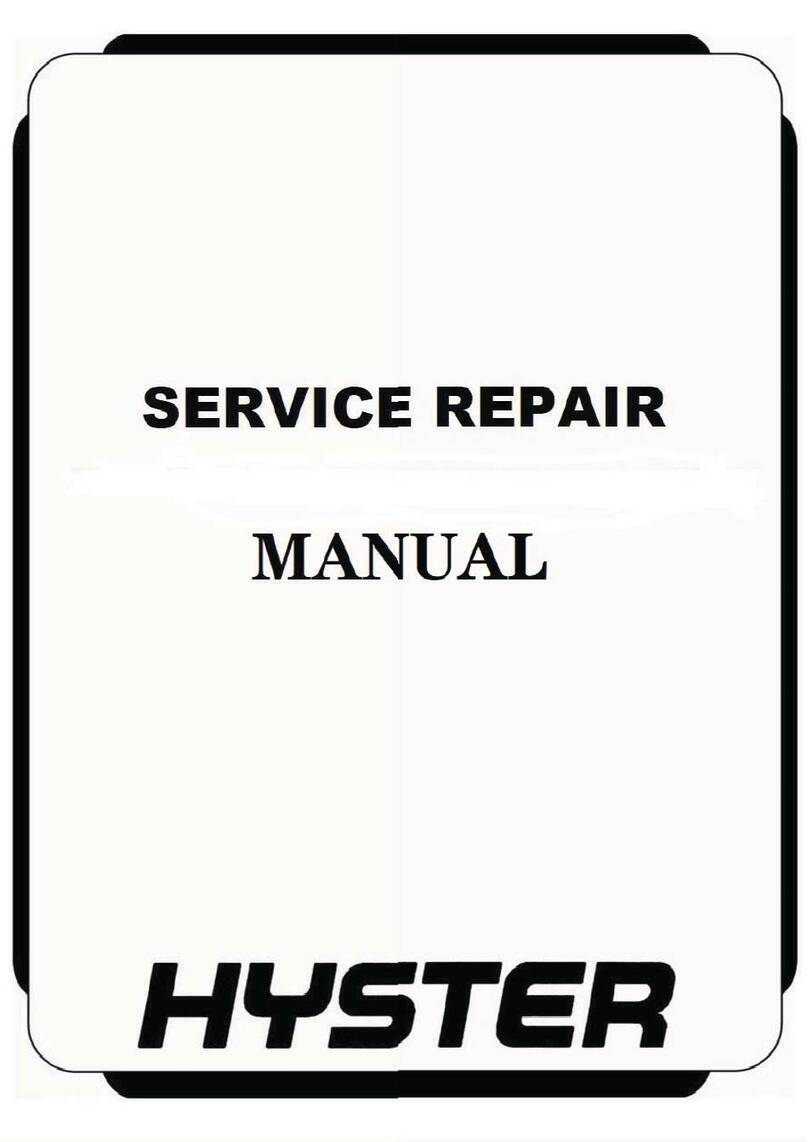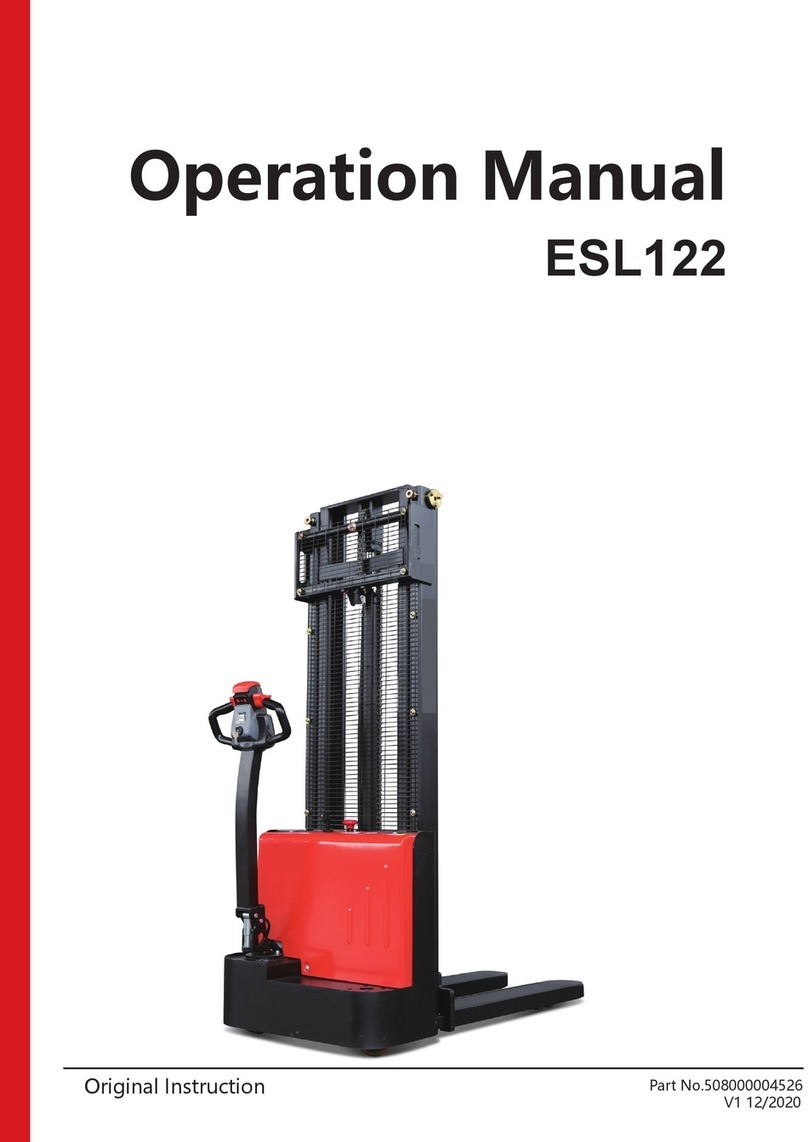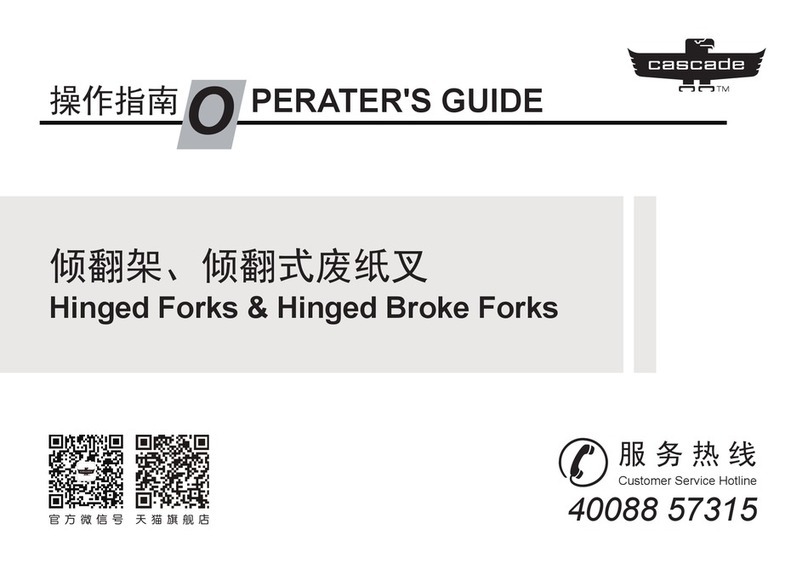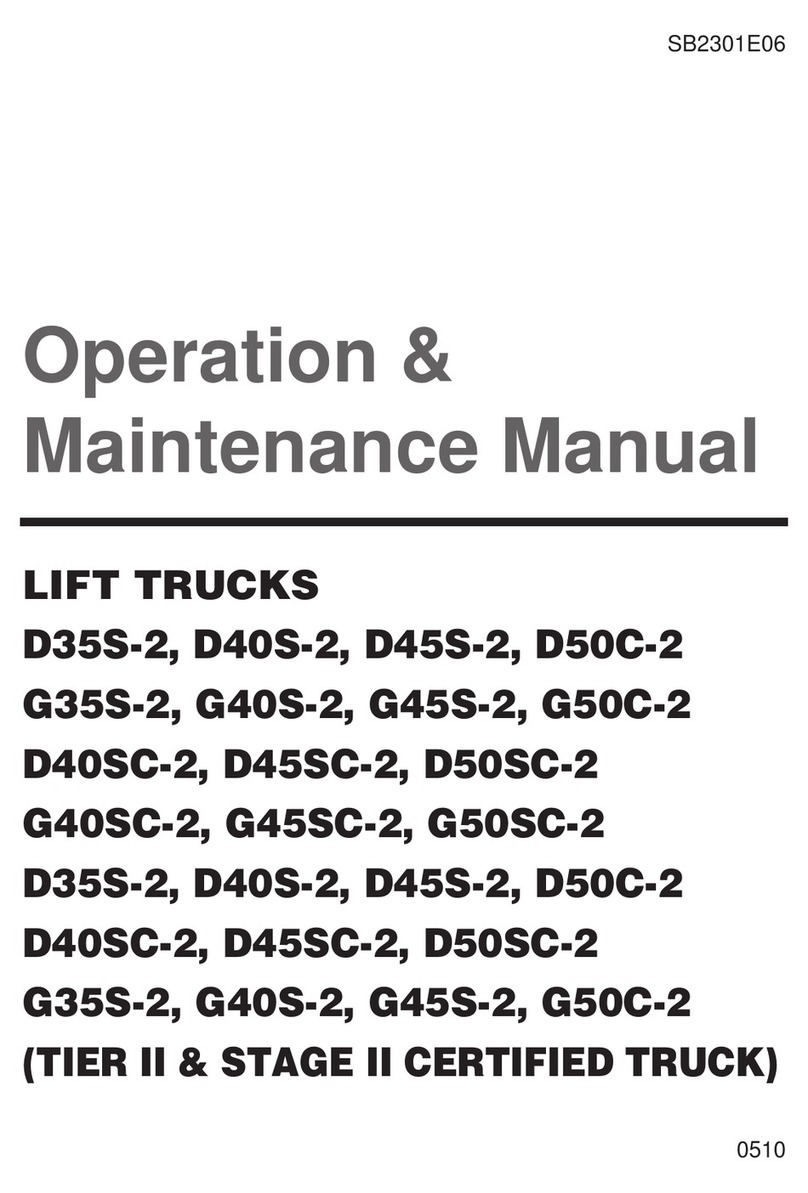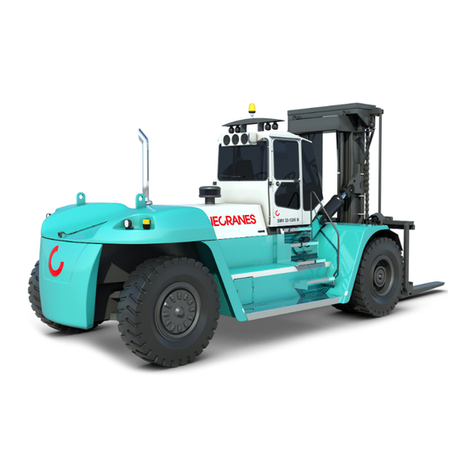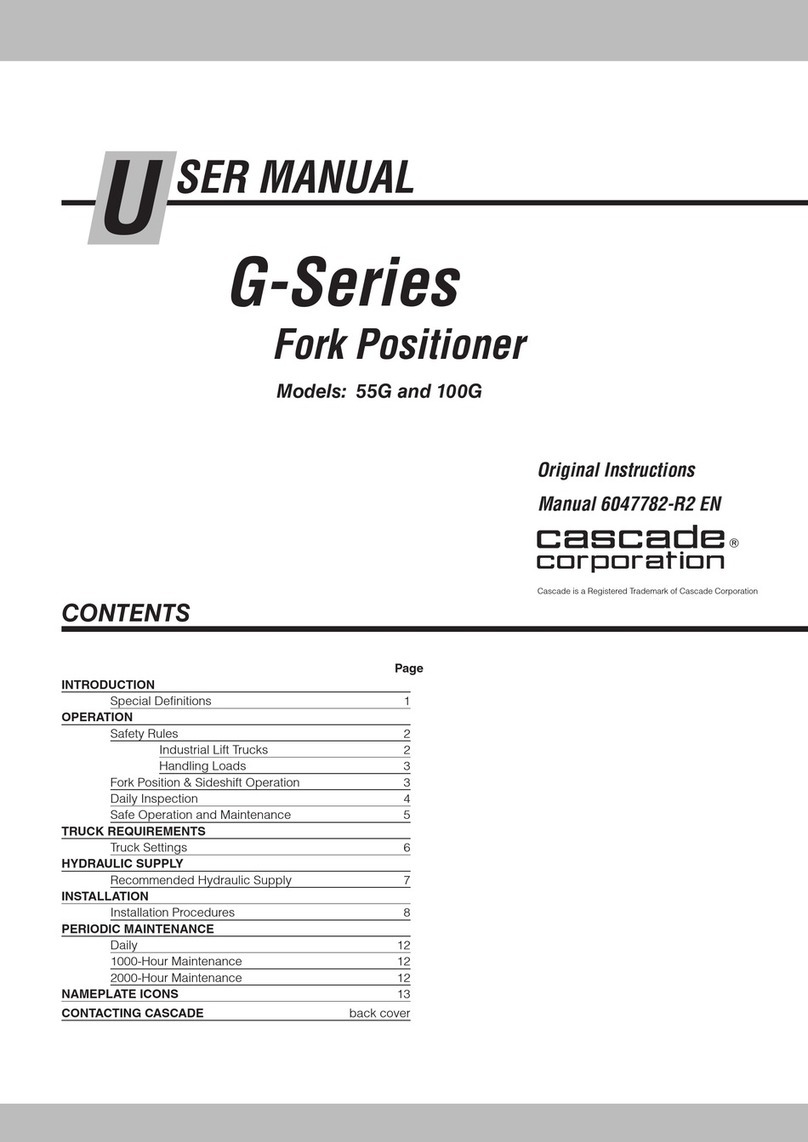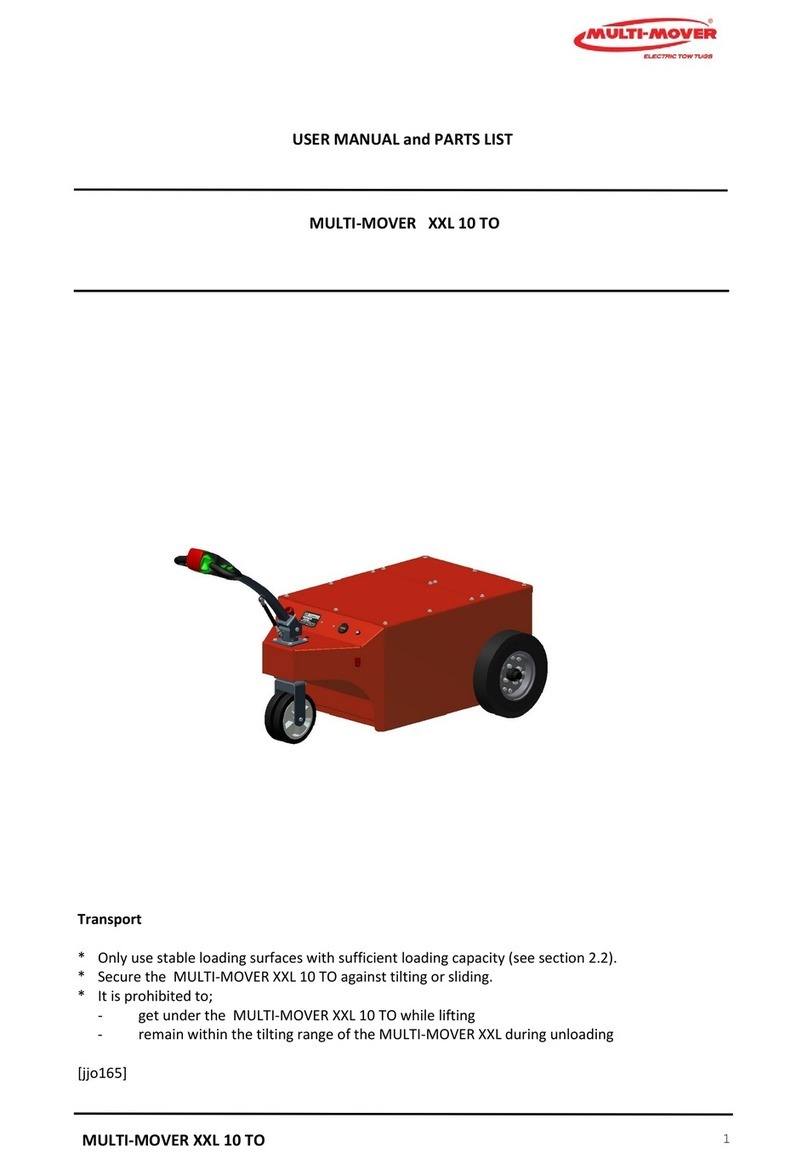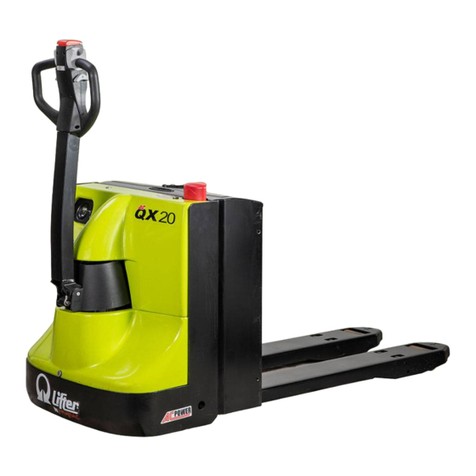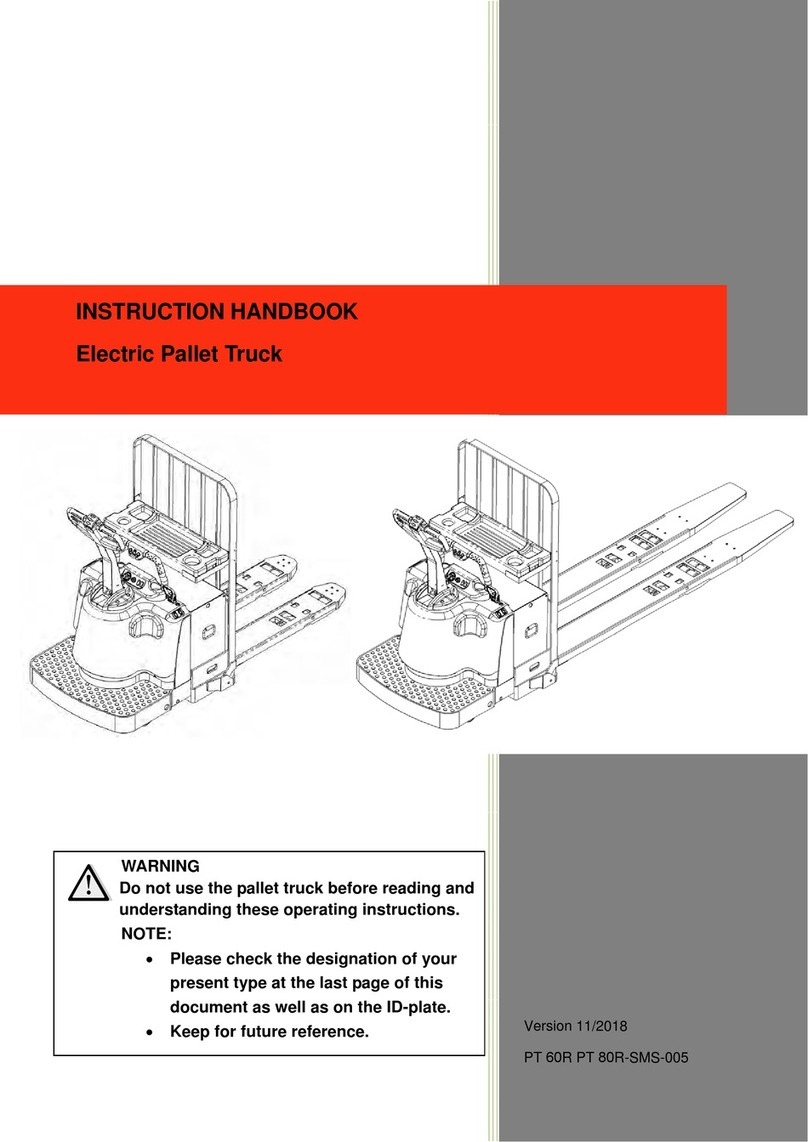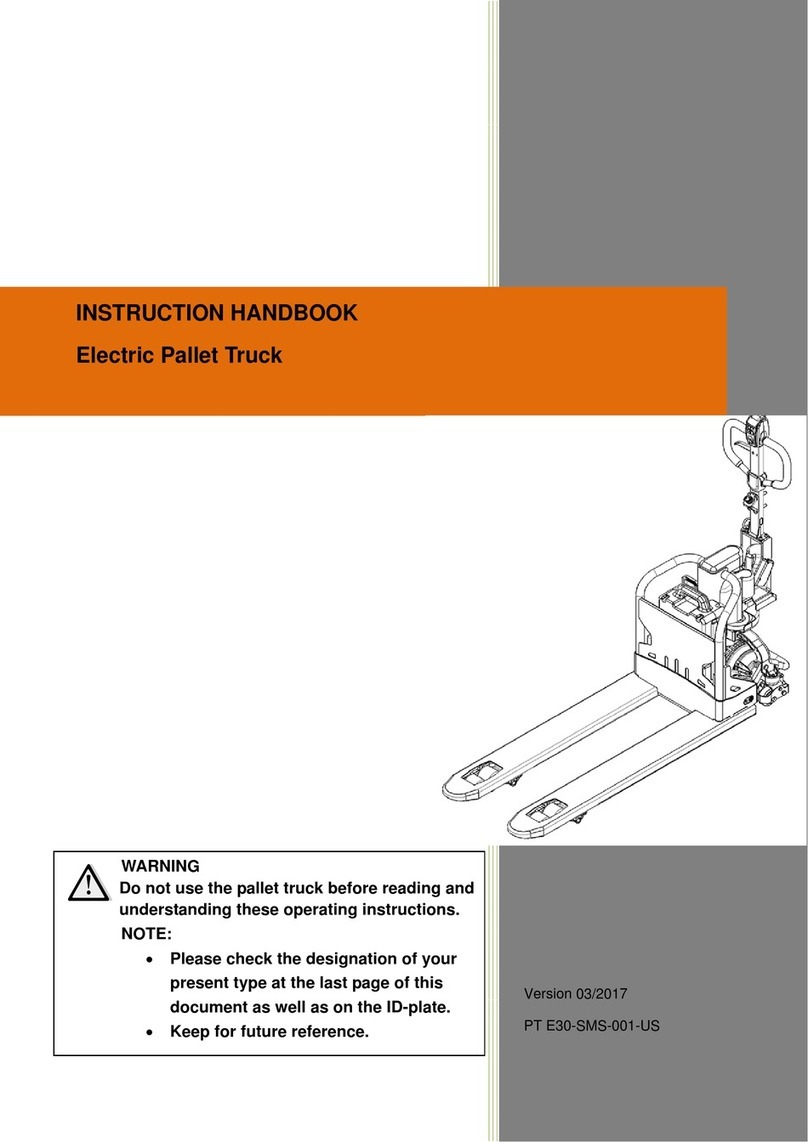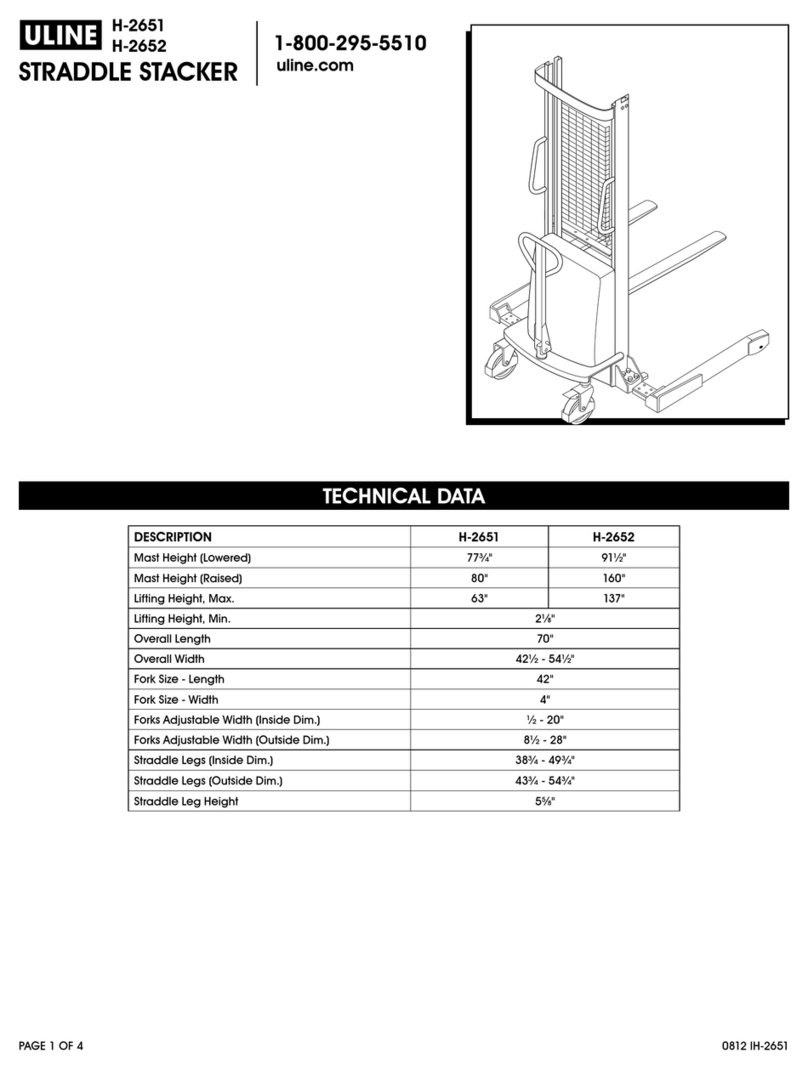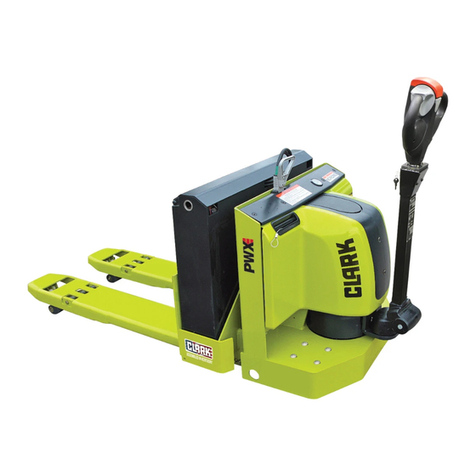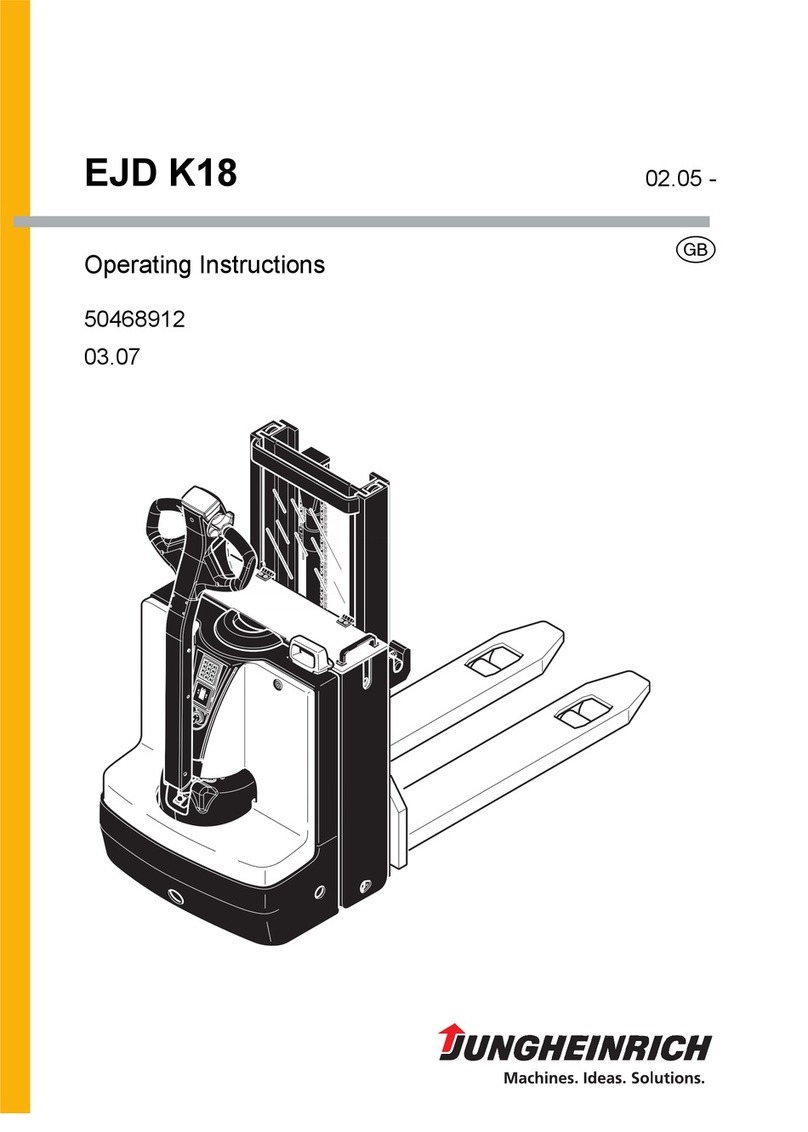
1Introduction
Forklift data
Forklift data
We recommend that you record the principal
forklift data in the following table so that they
are available if required by the sales network
or authorised service centre.
Type
Serial number
Date of delivery
.
General information
• This manual contains "Original Instructions"
provided by the manufacturer.
• The "operator" is defined as the person
driving the forklift.
• The "user" is the physical or legal person
who has the forklift truck used by the
operators.
• For correct use of the forklift and in order
to avoid accidents, the operator is obliged
to read, understand and apply the contents
of this manual, the "Rules for the use of
industrial vehicles" and the labels and
plates applied to the forklift.
• This manual and the attached "Rules for
the use of industrial vehicles" must be kept
carefully and must always be on the forklift
for fast consultation.
• The manufacturer assumes no responsibil-
ity for any accidents to persons or damage
to things due to the failure to observe the
instructions in this manual, in the "Rules for
the use of industrial vehicles" and on the
labels and adhesive supplied to the forklift.
• The forklift may not be put to any use other
that than indicated in this manual.
• The forklift must be used by appropriately
trained operators only. For the necessary
operator training, contact the authorised
sales network.
• Persons working near the forklift must also
be instructed in the risks associated with
use of the forklift.
•Intheinterestsofc
lear information, some
illustrations in this manual show the forklift
without the safety equipment (guards,
panels, etc.). The forklift may not be used
without safety equipment.
How to Consult the Manual
There is a table of contents at the beginning
of the manual for ease of use. The manual is
divided into chapters with specific topics. The
name and title of the chapter are given at the
top of each page The following is found at the
bottom of each page: the type of manual, the
identifying code, the language and the manual
version.
Some general information is provided in this
manual. Please only consider the information
relevant for your specific forklift.
The following symbols have been used to
highlight some parts of this manual.
DANGER
Failure to observe the instructions highlighted with
this symbol may jeopardise safety.
24
5418043404 [EN]
